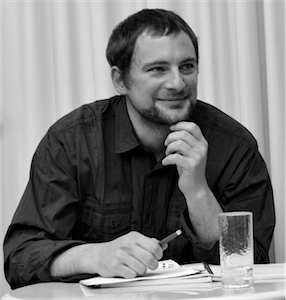Musée d’ethnographie de Neuchâtel
The Musée d’ethnographie de Neuchâtel (MEN) was one of the leaders of two successive research program funded by the Swiss National Fund for Scientific Research: 'Intangible Cultural Heritage: The Midas Touch?' (2009-2012) and 'Intangible Cultural Heritage in Switzerland: Whispered Words' (2012-2015). During that period, the MEN realised three different exhibitions about intangible heritage: Bruits (2010-2011), Hors-champs (2012-2013) and Secrets (2016).
Switzerland ratified the UNESCO 2003 Convention in 2008. As Switzerland considered that the many living traditions are the Swiss’ intangible heritage, it began to compile an inventory of the living traditions found on its territory. The research project, led by the Institute of Ethnology of the University of Neuchâtel, intended to follow that compiling’s process. The three exhibitions of the MEN were linked to that analysis and proposed a critical point of view on different aspects of the UNESCO Convention and the process. Bruits investigated the transformation of various sound productions into heritage, Hors-champs questioned the side effect of inventories, and Secrets was a journey – a kind of initiatory journey – into the meander of the secret, considered as an item of intangible cultural heritage. All in all, more than six years of the institution were centred around intangible heritage.
Secrets
Description of the project / practice / program
The exhibition Secrets was organized outside the museum. It presented itself as an enigma to the visitors. The advertising poster provided only information about the place of departure, but no indication of the route and the content. From the very beginning of its adventure, the visitor was thus in a form of complete ignorance of both the rules of the game and the stakes of the exhibition.
During his journey, the visitor was gradually passing from the posture of the complete ignorant to that of the knowing. The exhibition was not so important for what it showed to visitors. It was above all an experience to live. By this radical choice, we chose to carry a strong reflection on the best way of presenting an object as strange as the secret. For to understand the secret, it is necessary to live it.
By offering an innovative exhibition in its form, in its presentation of ideas or objects, the exhibition proposed an anthropological reflection on the secret in our contemporary societies. The more general and fundamental question, deeply linked to the usual practices of intangible cultural heritage is: Can we theoretically consider any item as part of the intangible heritage? And if so, how is it possible to speak of or represent an item as difficult to grasp as the secret? Diversity of practices, diversity of presentation and diversity of items of the intangible cultural heritage were thus at the heart of this original device.
How were practitioners of intangible cultural heritage involved?
As the main point of our three exhibitions on intangible cultural heritage was not to work directly with practitioners of intangible heritage, but to propose an in-depth analysis of the ongoing inventorying process in Switzerland. Therefor the practitioners of intangible heritage were not at the heart of our work. Nonetheless, during the preparation of the exhibitions, we did some ethnographic fieldwork in order to understand the diversity of the actors’ logic. Those fieldwork resulted in different exhibitions modules (like multimedia modules, videos, etc.) and presented some of the actors and the way they deal with both living traditions and the process of inventories.
The UNESCO and different Swiss cantonal and federal offices implicated in the inventory have their own logic and perception of what should be considered as a living tradition or not. It sometimes differs from the perception and logic of practitioners of intangible heritage. The main challenge of our exhibitions was to understand and to show these differences, while inviting visitors to a co-constructed interpretation of the causes of these differences.
CV of the author

Olivier Schinz is assistant curator at the Museum of Ethnography in Neuchâtel (Switzerland). Olivier is an anthropologist. He completed his PhD on speech and oral poetry among the Moors of Mauritania (2009). When the Swiss Confederation ratified the UNESCO Convention on the intangible cultural heritage, he was mandated by the Canton of Geneva to carry out an inventory of its intangible heritage, referred to in Switzerland as 'living traditions'. In 2011, he joined the Musée d’ethnographie de Neuchâtel and participated at the researches around the intangible cultural heritage. He was member of the team who realised the third exhibition dedicated to intangible cultural heritage: Secrets.
Practical
When
30 March 2018 from 08:22 to 08:22
Where
Subscriptions
It is no longer possible to subscribe to this bestpractice. Reports and videos will be published after the bestpractice.